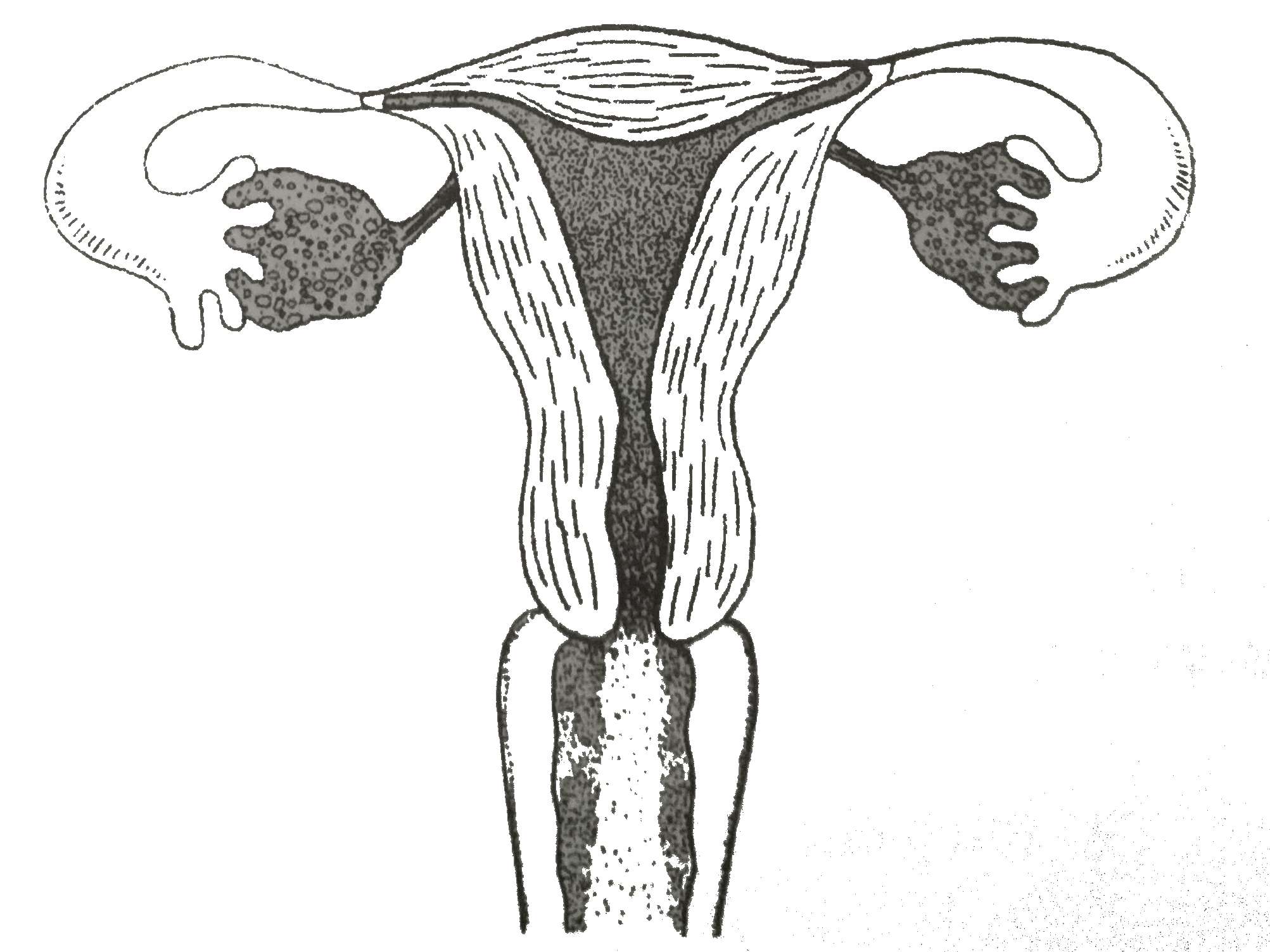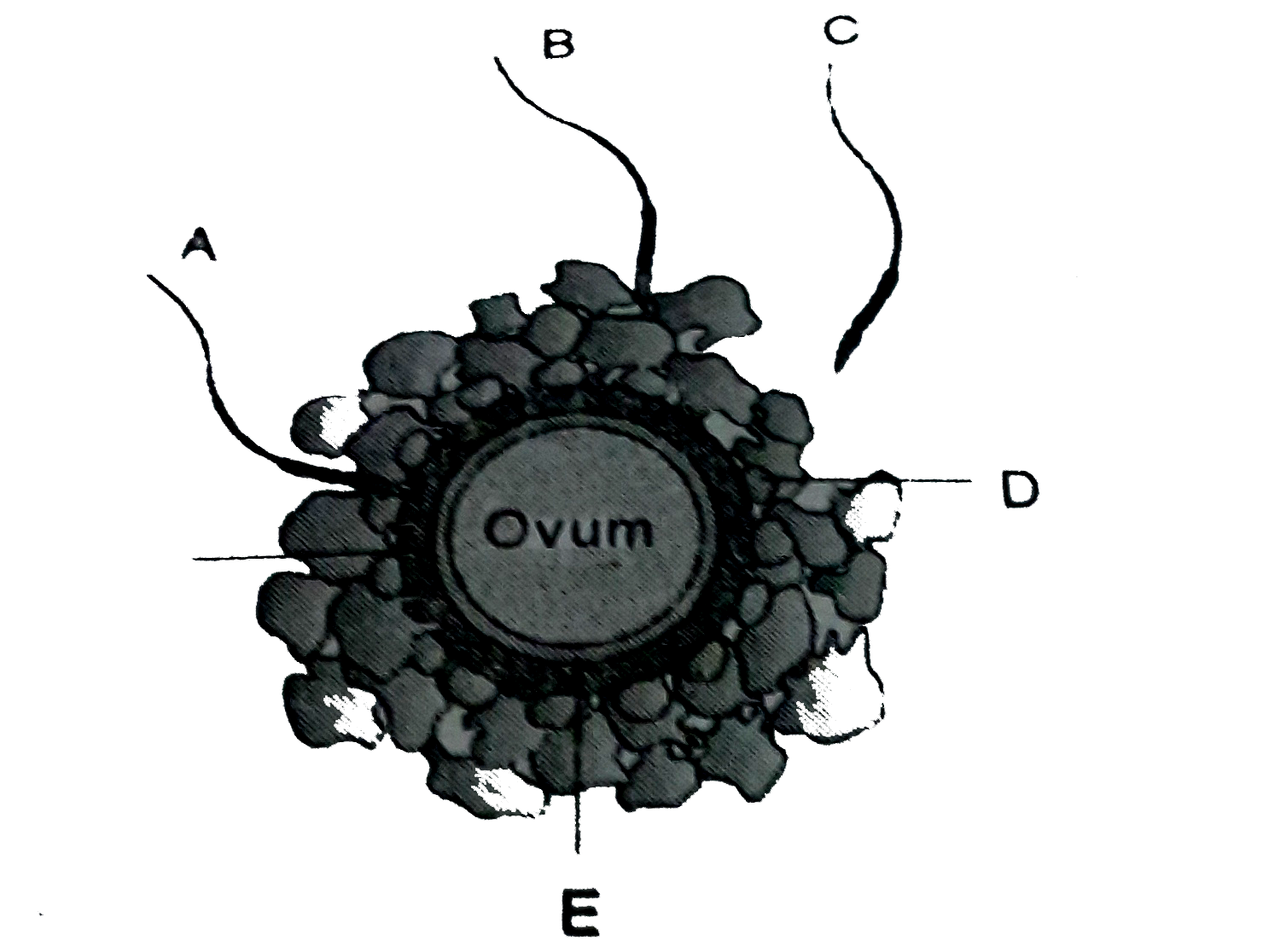Diaphragms, cervical caps and vaults prevent conception by
(a) increasing phagocytosis of sperm within uterus
(b) suppressing sperm motility
(c) inhibiting ovulation and implantation
(d) blocking the entry of sperm through the cervix
increasing phagocytosis of sperm within uterus
suppressing sperm motility
inhibiting ovulation and implantation
blocking the entry of sperm through the cervix
The correct Answer is:D
To solve the question regarding how diaphragms, cervical caps, and vaults prevent conception, we can analyze each option step by step.
1. Understanding the Mechanism of Action:
- Diaphragms, cervical caps, and vaults are considered barrier methods of contraception. They are designed to physically block sperm from entering the uterus.
2. Analyzing Each Option:
- Option A: Increasing phagocytosis of sperm within the uterus:
- This option suggests that these devices enhance the immune response to sperm. However, this is not their primary function. Barrier methods do not increase phagocytosis of sperm.
- Option B: Suppressing sperm motility:
- This option implies that these devices hinder the movement of sperm. While some contraceptives do affect sperm motility (like certain IUDs), barrier methods primarily block sperm rather than directly affecting their motility.
- Option C: Inhibiting ovulation and implantation:
- This option refers to mechanisms that prevent ovulation or the implantation of a fertilized egg. This is typically the function of hormonal contraceptives (like the pill), not barrier methods.
- Option D: Blocking the entry of sperm through the cervix:
- This option accurately describes the primary function of diaphragms, cervical caps, and vaults. By covering the cervix, these devices physically prevent sperm from entering the uterus.
3. Conclusion:
- After analyzing all the options, it is clear that the correct answer is (d) blocking the entry of sperm through the cervix. This is the primary mechanism by which diaphragms, cervical caps, and vaults prevent conception.
Final Answer:
The correct option is (d) blocking the entry of sperm through the cervix.
- Diaphragms, cervical caps, and vaults are considered barrier methods of contraception. They are designed to physically block sperm from entering the uterus.
- Option A: Increasing phagocytosis of sperm within the uterus:
- This option suggests that these devices enhance the immune response to sperm. However, this is not their primary function. Barrier methods do not increase phagocytosis of sperm.
- Option B: Suppressing sperm motility:
- This option implies that these devices hinder the movement of sperm. While some contraceptives do affect sperm motility (like certain IUDs), barrier methods primarily block sperm rather than directly affecting their motility.
- Option C: Inhibiting ovulation and implantation:
- This option refers to mechanisms that prevent ovulation or the implantation of a fertilized egg. This is typically the function of hormonal contraceptives (like the pill), not barrier methods.
- Option D: Blocking the entry of sperm through the cervix:
- This option accurately describes the primary function of diaphragms, cervical caps, and vaults. By covering the cervix, these devices physically prevent sperm from entering the uterus.
- After analyzing all the options, it is clear that the correct answer is (d) blocking the entry of sperm through the cervix. This is the primary mechanism by which diaphragms, cervical caps, and vaults prevent conception.
The correct option is (d) blocking the entry of sperm through the cervix.
Similar Questions
Which contraceptive method inhibit ovulation and implantation as well as after the quality of cervical mucus to prevent/retard entry of sperm?
View SolutionRead the statements given below . Identify which of them are true and which of them are false and select correct option.
1. An IUD can be inserted by a lady herself into the uterus through her vagina.
2. IUDS increase phagocytosis of sperms in the fallopian tube.
3 Copper ions suppress sperm motility and fertilizing capacity.
4. Hormone releasing IUDs prevents ovulation.
(a) 1 - True , 2 - True , 3 - False , 4 - False
(b) 1 - False , 2 - False , 3 - True , 4 - True
(c) 1 - True , 2 - False , 3 - True , 4 - False
(d) 1 - False , 2 - True , 3 - False , 4 - True
View Solution
Knowledge Check
How do the pills work ?
(i) Inhibit ovulation and implantation
(ii) Alter the quality of cervical muscus to prevent or retard the entry of sperms
(iii) Inhibit spermatogenesisA(i),(ii) and (iii)B(i) and (ii)C(ii) onlyD(iii) onlyRead the following statements and select the option having both incorrect statements
(i) Condoms decrease sperm motility
(ii) Diaphragms, cervical caps and vaults are for both males and females
(iii) IUDs are inserted by expert nurses
(iv) Sterilisation is a terminal method to prevent further pregnancy.A(i) and (iii)B(i) and (ii)C(iii) nad (iv)D(ii) and (iv)
The correct statements about the working or oral pills are :
(i) Inhibit ovulation and implantation
(ii) Alter the quality of cervial mucus to prevent or retard the entry of sperms
(iii) Inhibit spermatogensis
View SolutionIn the given figure label the parts and mention their functions
(a)Production of egg (b) Site of fertilisation
(c)Site of implantation (d) Entry of the sperms
View SolutionGiven below is the diagram of a human ovum surrounded by a few sperms. Study the diagram and answer the following questions :

(a) Which one of the sperms would reach the ovum earlier ?
(b) Identify 'D' and 'E'. Mention the role of 'E'.
(c ) Mention what helps the entry of sperm into the ovum and write the changes occuring in the ovum during the process.
(d) Name the specific region in the female reproductive system where the event represented in the diagram takes place.
View SolutionWhich of the following statement is/are correct about diaphragms, cervical caps and vaults?
(a) Barrier methods of contraception
(b) Cover the cervix during coitus
(C ) Protect the user from contracting STDs
(d) They are reusable.
View SolutionFill up the blanks in the following paragraph by selecting the correct option
A. i___ methods work on the principle of avoiding chances of ovum and sperms meeting
B. ii___ is one such method in which the couples avoid coitus from day 10 to 17 of the menstrual cycle
C. iii___ is another method in which the male partner withdraws his penis from the vagina just before ejaculation so as to avoid insemination
D. iv___ method is based on the fact that ovulation and therefore the cycle do not occur during the period of intense loctation following parturition.
View SolutionGiven below ar four methods (a-d) and their modes of action (i-iv) in achieving contraception. Select their correct mathing from the four options that follow.
MethodMode of Action(a) The pill (i) Prevents sperms reaching cervix(b) Condom(ii) Prevents implantation(c) Vasectomy(iii) Prevents ovulation(d) Copper-T(iv) Semen contains no sperm
View Solution
